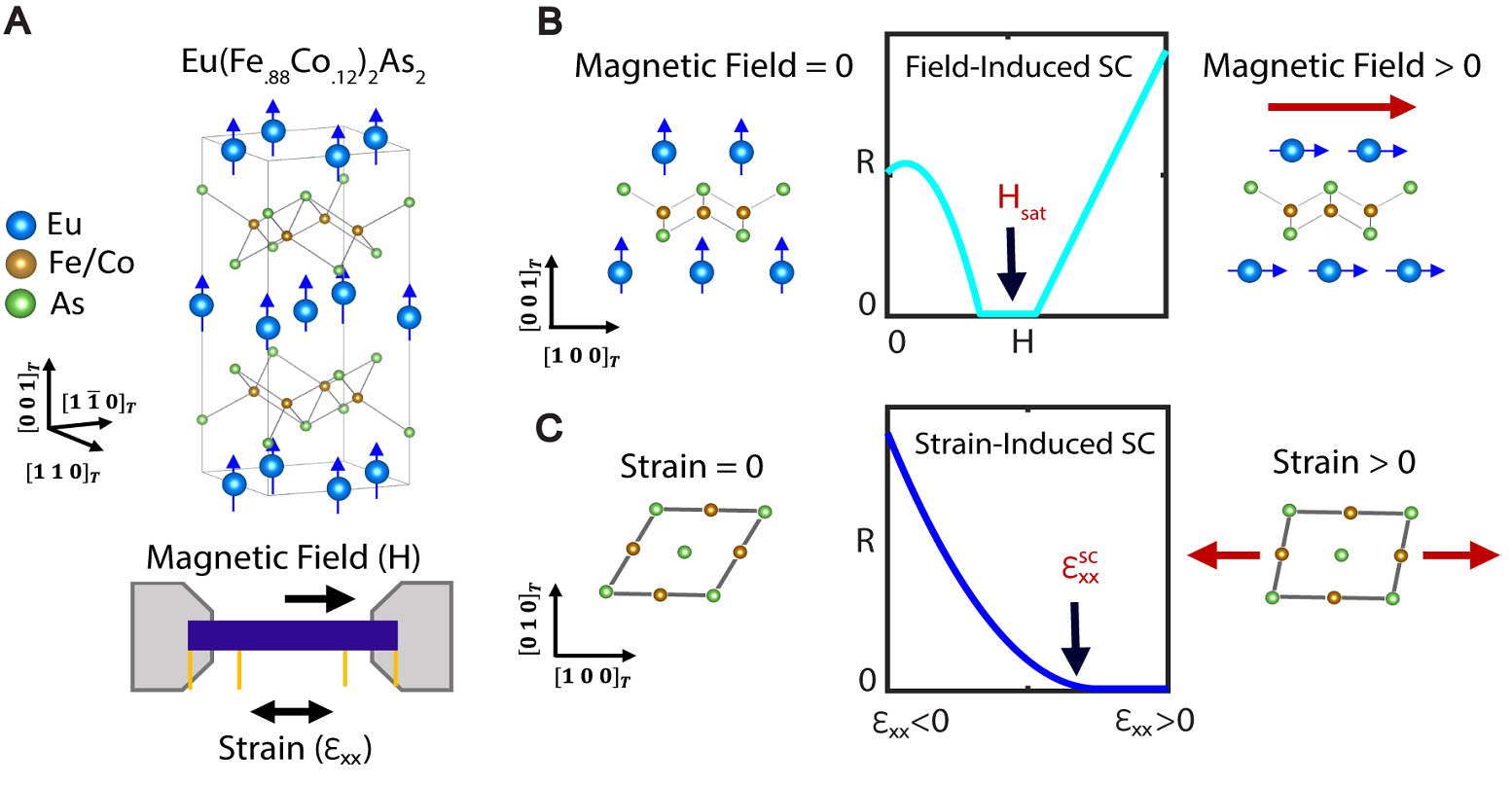| Dec 20, 2023 |
Scientists reveal superconductor with on-off switches
(Nanowerk News) As industrial computing needs grow, the size and energy consumption of the hardware needed to keep up with those needs grows as well. A possible solution to this dilemma could be found in superconducting materials, which can reduce that energy consumption exponentially. Imagine cooling a giant data center full of constantly running servers down to nearly absolute zero, enabling large-scale computation with incredible energy efficiency.
|
|
Physicists at the University of Washington and the U.S. Department of Energy’s (DOE) Argonne National Laboratory have made a discovery that could help enable this more efficient future. Researchers have found a superconducting material that is uniquely sensitive to outside stimuli, enabling the superconducting properties to be enhanced or suppressed at will. This enables new opportunities for energy-efficient switchable superconducting circuits.
|
|
The paper was published in Science Advances ("Strain-switchable field-induced superconductivity").
|
 |
| (A) The material used in this study consists of stacked layers of ferromagnetic atoms (blue) and superconducting atoms (gold). (B) Applying a small magnetic field induces superconductivity, while (C) applying strain can induce or suppress superconductivity. (Image: Shua Sanchez, University of Washington)
|
|
Superconductivity is a quantum mechanical phase of matter in which an electrical current can flow through a material with zero resistance. This leads to perfect electronic transport efficiency. Superconductors are used in the most powerful electromagnets for advanced technologies such as magnetic resonance imaging, particle accelerators, fusion reactors and even levitating trains. Superconductors have also found uses in quantum computing.
|
|
Today’s electronics use semiconducting transistors to quickly switch electric currents on and off, creating the binary ones and zeroes used in information processing. As these currents must flow through materials with finite electrical resistance, some of the energy is wasted as heat. This is why your computer heats up over time. The low temperatures needed for superconductivity, usually more than 200 degrees Fahrenheit below freezing, makes those materials impractical for hand-held devices. However, they could conceivably be useful on an industrial scale.
|
|
The research team, led by Shua Sanchez of the University of Washington (now at the Massachusetts Institute of Technology), examined an unusual superconducting material with exceptional tunability. This crystal is made of flat sheets of ferromagnetic europium atoms sandwiched between superconducting layers of iron, cobalt and arsenic atoms. Finding ferromagnetism and superconductivity together in nature is extremely rare, according to Sanchez, as one phase usually overpowers the other.
|
|
“It is actually a very uncomfortable situation for the superconducting layers, as they are pierced by the magnetic fields from the surrounding europium atoms,” Sanchez said. “This weakens the superconductivity and results in a finite electrical resistance.”
|
|
To understand the interaction of these phases, Sanchez spent a year as a resident at one of the nation’s leading X-ray light sources, the Advanced Photon Source (APS), a DOE Office of Science user facility at Argonne. While there he was supported by DOE’s Science Graduate Student Research program. Working with physicists at APS beamlines 4-ID and 6-ID, Sanchez developed a comprehensive characterization platform capable of probing microscopic details of complex materials.
|
|
Using a combination of X-ray techniques, Sanchez and his collaborators were able to show that applying a magnetic field to the crystal can reorient the europium magnetic field lines to run parallel to the superconducting layers. This removes their antagonistic effects and causes a zero-resistance state to emerge. Using electrical measurements and X-ray scattering techniques, scientists were able to confirm that they could control the behavior of the material.
|
|
“The nature of independent parameters controlling superconductivity is quite fascinating, as one could map out a complete method of controlling this effect,” said Argonne’s Philip Ryan, a co-author on the paper. “This potential posits several fascinating ideas including the ability to regulate field sensitivity for quantum devices.”
|
|
The team then applied stresses to the crystal with interesting results. They found the superconductivity could be either boosted enough to overcome the magnetism even without re-orienting the field or weakened enough that the magnetic reorientation could no longer produce the zero-resistance state. This additional parameter allows for the material’s sensitivity to magnetism to be controlled and customized.
|
|
“This material is exciting because you have a close competition between multiple phases, and by applying a small stress or magnetic field, you can boost one phase over the other to turn the superconductivity on and off,” Sanchez said. “The vast majority of superconductors aren’t nearly as easily switchable.”
|

